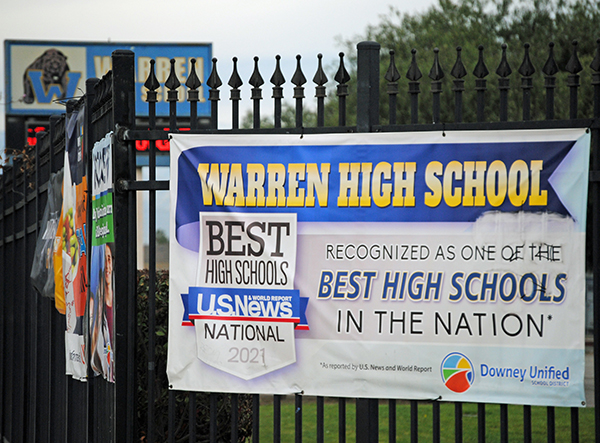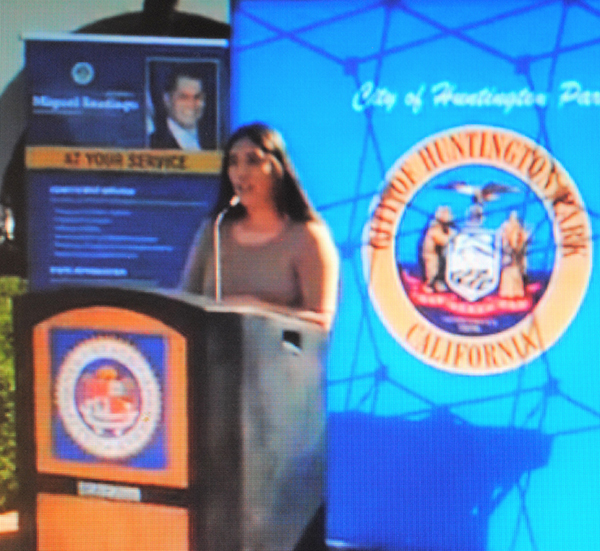BOYLE HEIGHTS — The county Board of Supervisors voted July 29 to move into the technical planning phase of a years-long project to convert the Los Angeles General Hospital campus into a `”Healthy Village” of wellness services, housing and other neighborhood amenities.
As part of the action spurred by Supervisor Hilda Solis, the county approved roughly $3.3 million in funding for a development team known as Centennial Partners to conduct the planning effort, which will include a thorough survey and analysis of land use at the campus, environmental conditions, engineering, transportation and parking.
“This historic project is about preserving our past while investing in our future,” Solis said in a statement following the vote. “We are creating a community space that prioritizes housing, health care, sustainability and dignity for our most vulnerable. The General Hospital has long been a symbol of healing, and through this effort, it will continue to serve as a beacon of hope and opportunity.”
Centennial Partners has worked closely with the Health Innovation Community Partnership, a grassroots advisory group founded in 2017 by Solis to ensure the redevelopment reflects community priorities.
The planning phase will include a proposed project description, initial architectural design and scale, an implementation timeline and development and economic terms. A formal community benefits agreement also will be part of the phase.
Once the planning phase concludes, Centennial Partners will assume responsibility for its project costs as well as those of the county. That next stage, the entitlement and predevelopment phase, includes negotiating agreements and completing the environmental review process.
The motion approved by the supervisors allocates $3.3 million in First District discretionary funds to support technical analysis and community-based planning during this stage.
The motion approved unanimously by the board also directed county staff to apply to have the art-deco building added to the National Register of Historic Places, a move Solis said could free up preservation funding and tax credits to assist with the overall project cost.
The building opened in 1934 and operated until it suffered structural damage in the 1994 Northridge earthquake. The site sits adjacent to the Los Angeles General Medical Center, a modern teaching hospital and Level 1 trauma center.
The L.A. General campus has undergone an expansion with the addition of several new behavioral health facilities, including a mental health urgent care center, a residential withdrawal management facility and a 128-bed mental health rehabilitation center. Together, those projects are part of the county’s broader restorative care village model, which integrates physical and behavioral health services in one location.
Preliminary studies support the adaptive reuse of the hospital’s historic Art Deco structure.
“This moment has been years in the making,” Rosa Soto, executive director of the Wellness Center at General Hospital, said in a statement. “From the beginning, we’ve brought community voices to the table — not just to be heard, but to shape what this space becomes. The Healthy Village is a vision born from our community members’ lived experiences, and this next phase is a powerful step toward making that vision real: housing that’s affordable, care that’s accessible, and a place where our families can truly thrive.”
Kelly LoBianco, director of the county Department of Economic Opportunity, called the board’s action “an important milestone” for the reimagining of the General Hospital campus.
“Today’s motion … will help guide the development of a comprehensive master plan by year’s end. We’re committed to continuing this momentum and delivering a revitalized space that supports affordable housing, small businesses, workers and vibrant and healthy living.”
The board’s motion also calls for exploration of a potential climate resilience district to support the long-term financial and environmental sustainability of the project. The Department of Economic Opportunity, working in partnership with other county departments and community stakeholders, will lead an ongoing engagement process to shape the community benefits agreement.
A report is expected to return to the Board of Supervisors by the end of the year.




